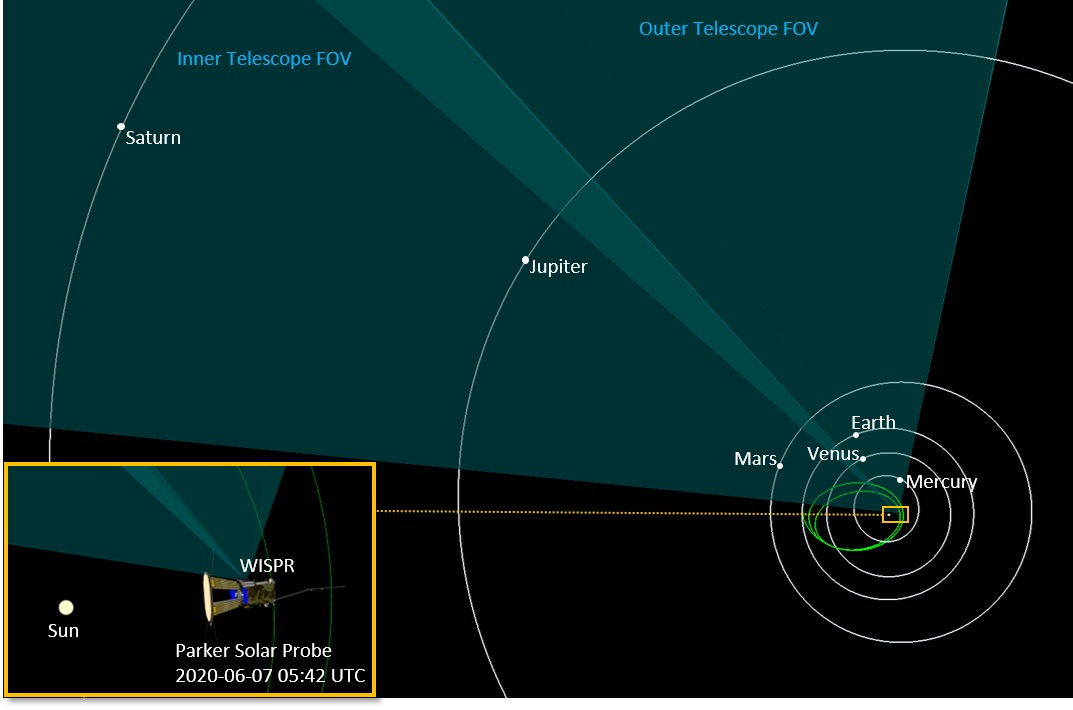Parker Solar Probe Captures a Planetary Portrait
Posted on 2021-01-26 15:10:27Its proximity to the Sun not only puts NASA’s Parker Solar Probe in position to grab unprecedented information on the nascent solar wind and solar activity, it also affords the spacecraft some unique (and pretty cool) views of our solar system.
Parker Solar Probe was wheeling around the Sun last June 7 – making the fifth in its series of 24 planned close approaches to our star – when its Wide-field Imager for Solar PRobe (WISPR) captured the planets Mercury, Venus, Earth, Mars, Jupiter and Saturn in its field of view.
WISPR’s job is to take images of the solar corona and inner heliosphere in visible light, as well as images of the solar wind, shocks and other structures as they approach and pass the spacecraft. The imager was doing just that last June, at the closest approach (or perihelion) of its orbit, when its field of view swept away from the edge of the Sun and toward the planets beyond. It’s an interesting perspective: Mercury, the innermost planet, appears farthest away from the Sun. The image also includes the six planets visible to the naked eye.
“Imagine being able to stand on the Sun and gaze toward the stars,” said Nour Raouafi, Parker Solar Probe project scientist at the Johns Hopkins Applied Physics Laboratory in Laurel, Maryland. “It’s just awe-inspiring to see so many worlds in our solar system – including our own planet – in the same portrait. We often think of viewing our solar system from the outside in, and this allows us the unique opportunity to see it from the inside out. It’s a view few spacecraft can provide, and Parker Solar Probe has given us an entirely different perspective on our place in space.”
The spacecraft was approximately 11.6 million miles from the Sun’s surface, and about 98.3 million miles (158 million kilometers) from Earth, when WISPR gathered the images. Parker Solar Probe has since completed two additional close approaches – the latest on Jan. 17 – that brought it within a record 8.4 million miles (13.5 million kilometers) of the Sun’s surface.
-- Mike Buckley, Johns Hopkins APL

2021-01-26_PSPPlanetaryPortrait
Credit: NASA/Johns Hopkins APL/Yanping Guo
High-Res Image
2021-01-26_PSPPlanetaryPortrait
Credit: NASA/Johns Hopkins APL/Naval Research Laboratory/Guillermo Stenborg and Brendan Gallagher
High-Res Image